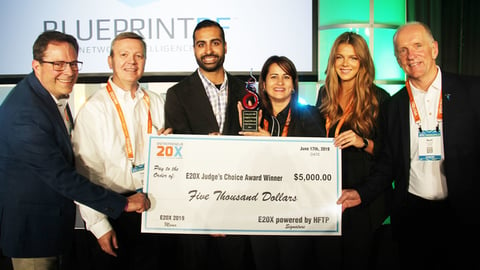WiFi 6, Hotspot 2.0 and 5G: How Will They Affect Hospitality’s Future?
Will 5G replace WiFi? This is a question that Peri Pierone, CEO of Eleven is frequently asked and his emphatic response is, NO. Perione expanded upon this during an educational session at the recent HITEC, explaining that he believes WiFi 6 and 5G will converge to offer guests the best possible connected experience with Hotspot 2.0 being the bridge between the two. To support this, he cites data from Cisco: In 2017, 54% of all data transactions were carried out on WiFi networks using 13.4 exabytes of data used per month. By 2022, Cisco predicts 59% of all data transactions will be carried out on WiFi networks with a total of 111.4 exabytes of data used per month. What does this indicate? As individuals begin to consume higher amounts of data, cellular carriers providing 5G services will be even more interested in leveraging WiFi for mobile data offloading.
But consumers often complain about the disconnect that happens when they walk into a building and lose cellular signal and then have a hard time connecting to the building’s WiFi. This is where Hotspot 2.0 comes in. It allows consumers to transfer seamlessly between 5G and WiFi.
For hotels, Hotspot 2.0 could be a differentiator that amplifies hotel loyalty programs. Consider this scenario: A hotel guest downloads the hotel’s mobile app. After signing up for the loyalty program, the mobile app asks the guest if they would like to be connected automatically to hotel WiFi no matter which location they are staying at. They agree and are prompted to download a Hotspot 2.0 profile on their mobile device. Now, every time they return to that hotel location or visit another one of that brand’s locations, they are instantly and securely connected to the brand’s WiFi network. Not only does this increase guest satisfaction, but it also offers hotels the ability to send out personalized interactions and targeted, relevant guest experiences.
Hotel brands could take this loyalty membership one step further by partnering with other brands and allowing hotel guests to connect seamless with those WiFi networks as well. For instance, when a loyalty members enter a partnering airline’s terminal or restaurant, they are automatically connected to the WiFi and have personalized offers sent to them by the partnering brand.
This represents a shift in thinking for hoteliers. It’s no longer about connecting multiple guests to a single hotel property network. Now it’s about connecting one guest to every multiple property networks.






